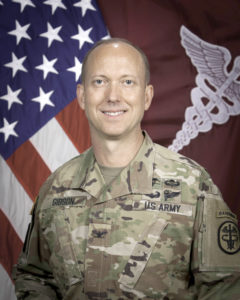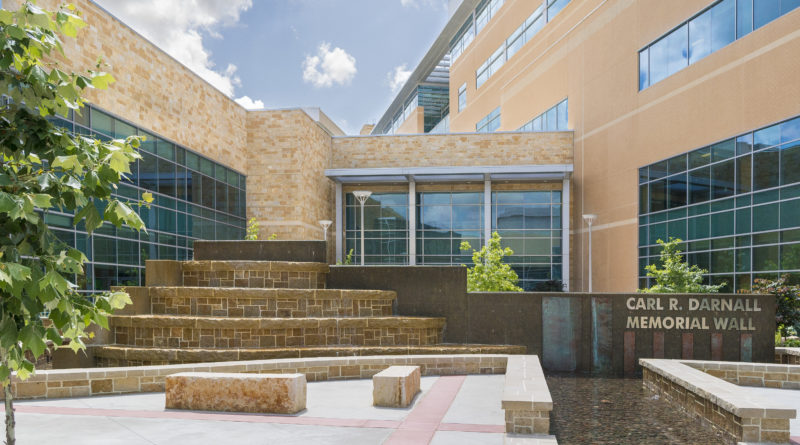Darnall Army Medical Center: A focused strategy
By Catherine Hosman
Contributed photos
“We’re No. 1!”
That’s the chant that can apply to Carl R. Darnall Army Medical Center (CRDAMC), which this year was named the No. 1 hospital in the U.S. Department of Defense (DOD) and No. 7 out of more than 700 hospitals nationally that participated in a rigorous assessment.
CRDAMC was cited for exemplary surgical quality outcomes by the American College of Surgeons’ National Surgical Quality Improvement Program.

“Last year, we were in the 40 percent range for surgical safety. This year we are No. 1 in the DOD and No. 7 in the nation among all hospitals (that participated),” says Col. David R. Gibson, now in his second year of command at CRDAMC. “We are among the best hospitals in the country to get a procedure done. To go from the top 40 percent to No. 1 in the DOD and No. 7 in the nation, that outcome measure speaks for itself.”
CRDAMC also received the Top 25 Environmental Excellence Award from Practice Greenhealth, the nation’s leading organization dedicated to environmental sustainability in healthcare.
The Practice Greenhealth Award is based on 32 different criteria in eight categories, ranging from nutritional efforts to renewable energy use to green operating rooms to recycling. Hospitals are scored and receive a report card. The top 25 are considered the industry leaders and stand as examples of best practices for other organizations.
To be considered in the top 25 in the nation, Gibson says, the hospital is judged on certain criteria: being in a Leadership in Energy and Environmental Design (LEED)-certified building, procurement practices and hazardous materials handling, among others.
“The Top 25 Award is given to hospitals that are innovative in their sustainability,” says Gibson. “Being among the top 25 shows that CRDAMC has a culture of sustainability. For external organizations on the level of Practice Greenhealth and the American College of Surgeons to acknowledge the efforts of the team is amazing. The recognition of a superior culture of safety and commitment to sustainability is exciting because it actually reinforces our organizational ethos—an exceptional patient experience every single time.”
When Gibson was assigned to CRDAMC in 2017 he made a commitment to conduct a complete assessment of the medical center’s operations and the 95 buildings in his command at Fort Hood to see what was working and what wasn’t.
“A medical center this size offers opportunities for process improvements across the board,” he says. Not only did he follow through on his promise to bring the new hospital into the 21st Century, he surpassed it.
Gibson is proud of the accomplishments CRDAMC has made in the last year. However, he is quick to point out that the progress is a total team effort by his staff.
An immediate challenge
Gibson’s enthusiasm for his work is infectious. He speaks quickly, is animated and excited as he describes the strategies used to meet his goals. He’s a motivator that inspires his team.
When he assumed the command at CRDAMC, the hospital had a $20 million deficit. “In nine months, we made up that $20 million and added another $36 million over our performance plan. That is the first time in the history of this hospital that we’ve had that level of success.”
How was it accomplished? “It all begins with a strategy and a mindset,” Gibson says. “There were challenges across the system. We did a comprehensive study asking the executive committee to assess the status of their areas as it relates to the seven domains in the McKinsey 7S Model: Structure, Systems, Strategy, Skills, Staff, Style and Shared Values.”
The next step was to introduce his team to “Outward Mindset: Seeing Beyond Ourselves,” based on the book from The Arbinger Institute. “With all the assessments done, we came together as an executive body with ‘meet to learn’ and ‘meet to give’ meetings,” he says.
Gibson explains that the departmental assessments allowed leaders to see problems through the eyes of others. “It put a face on the climate and culture. Now we could bring in people to address our challenges.”
Becoming solvent
Closing the $20 million deficit took a group of committed leaders and a larger strategy.
“It’s the means, ways and ends,” Gibson says. “Means is the understanding of current state and resources available before thinking about the ‘to be’ state.”
The “ways” is a strategy for achieving the ends, he says. “Based on resources and the current state, what is the plan, what are the objectives, methods and programs and how will they be applied to achieve the desired ends? What do we use to get it into place?” Gibson asks.
The “ends” is the quadruple aim: Providing better health, better care, lower costs and improved readiness for the troops. “Our troops are ready to deploy on a moment’s notice,” Gibson says, adding that more than 90 percent of troops of the III Corps are deployable. Gibson says a lot of the good work is already done but is a constant challenge.
CRDAMC serves more than 100,000 active-duty soldiers, their families and retirees. Primary care, behavioral health and medical specialties are its core disciplines. “We have a lot of young soldiers,” he says.
Gibson has one mission: To help people succeed. “Leadership is about your ability to influence. It’s not about rank, title, position or formal relationships. Success is a collection of positive habit patterns,” he says. “There are multiple success stories in this organization. I have a small role in all this success.”




